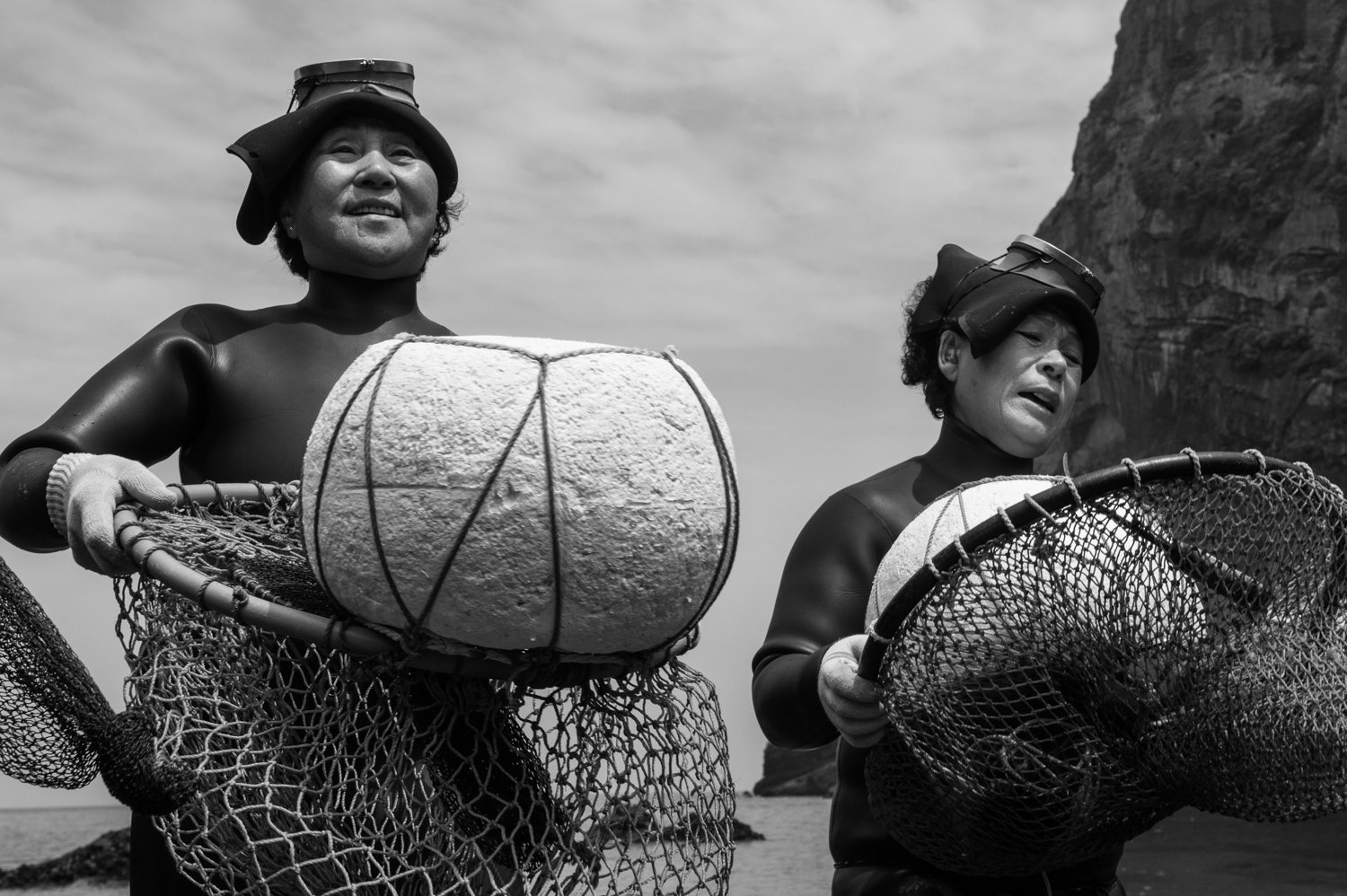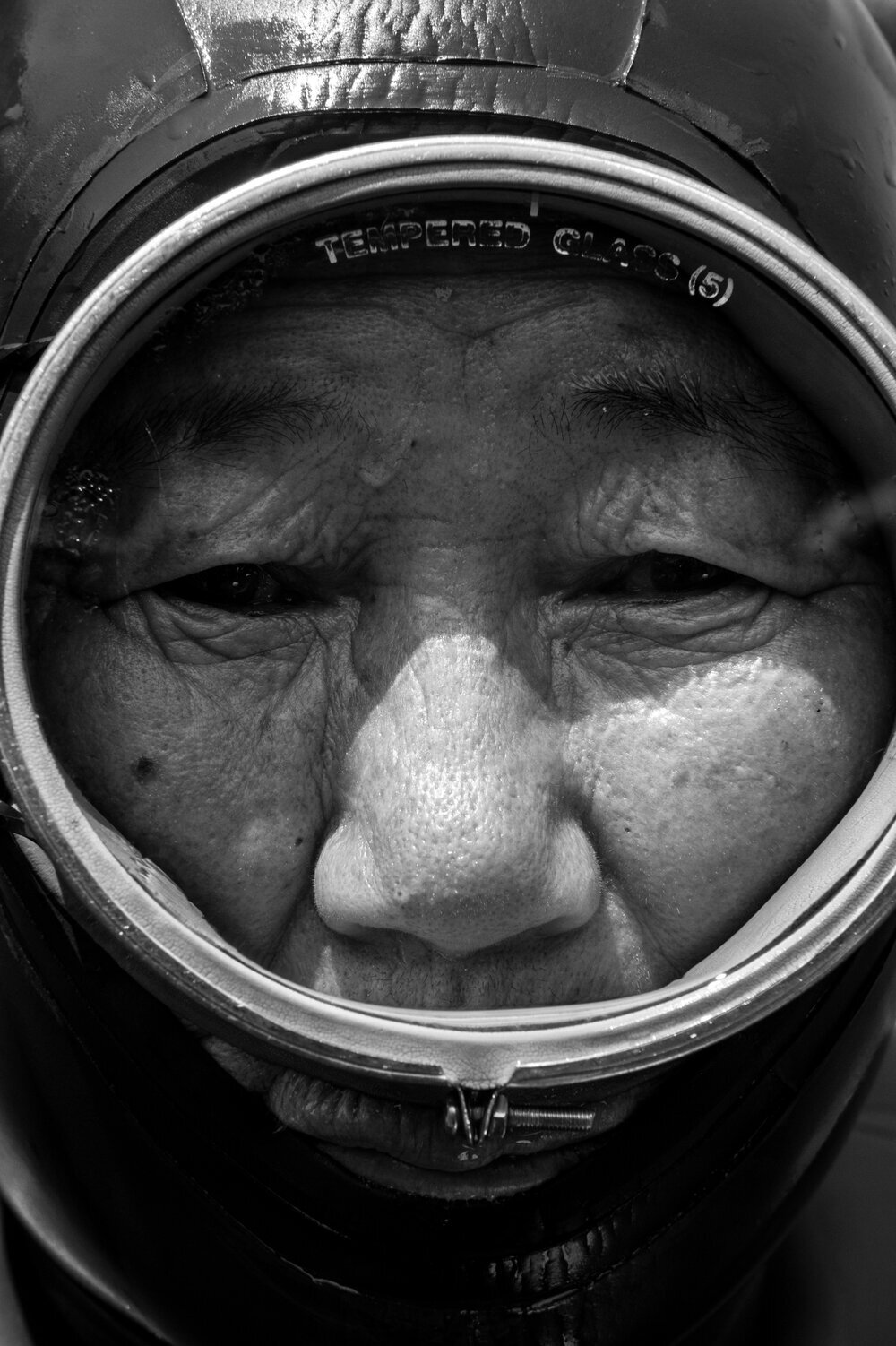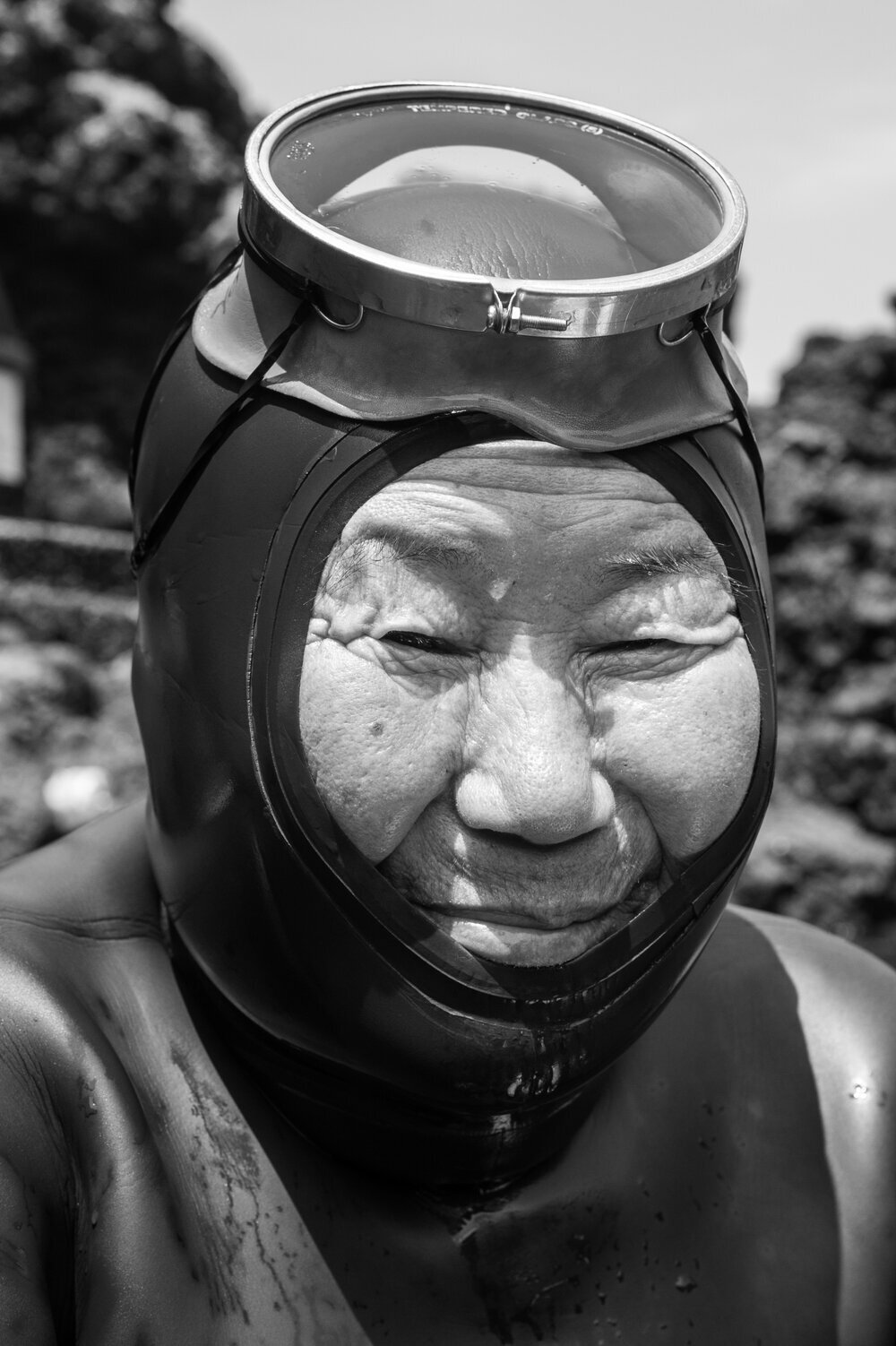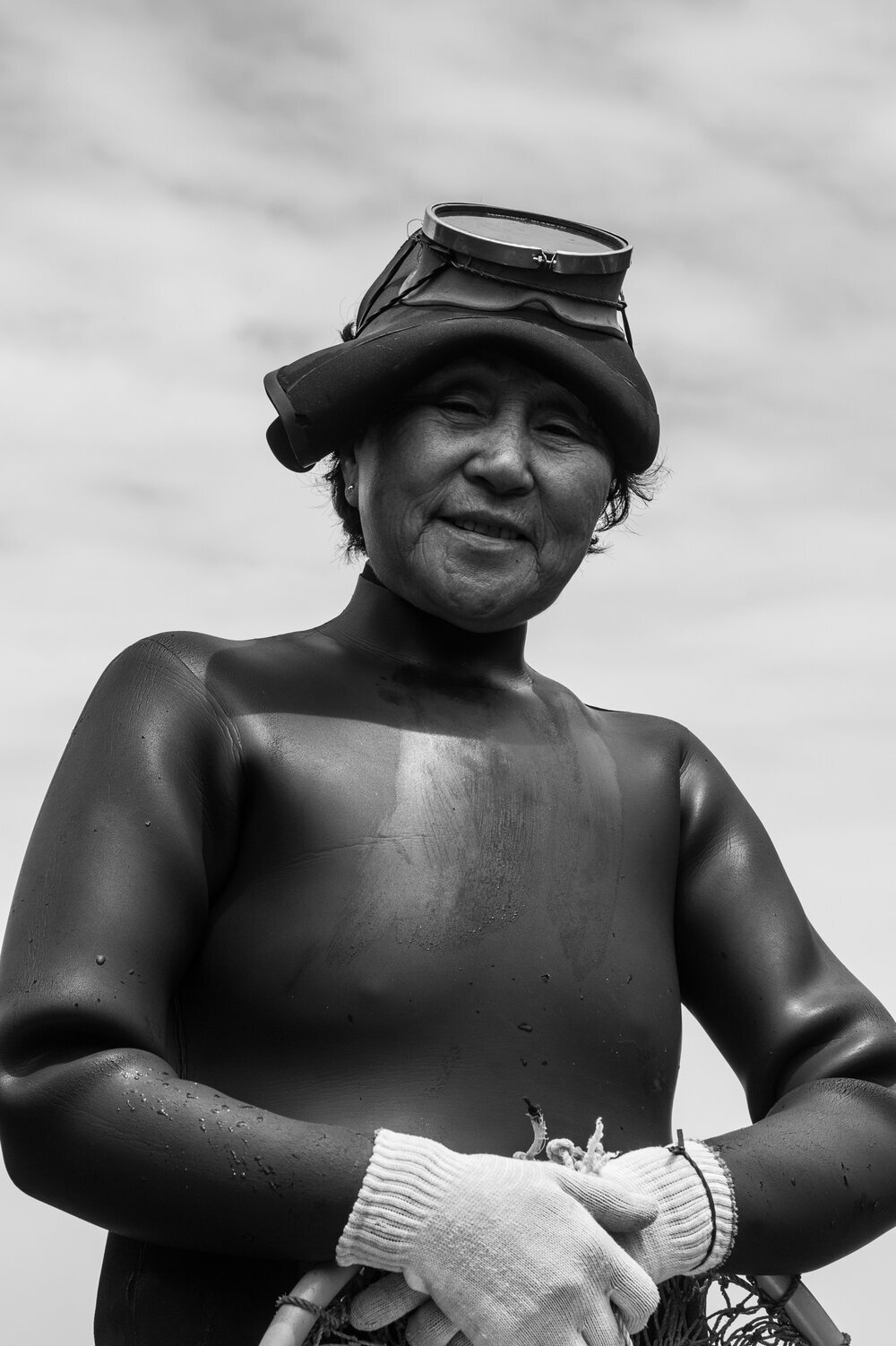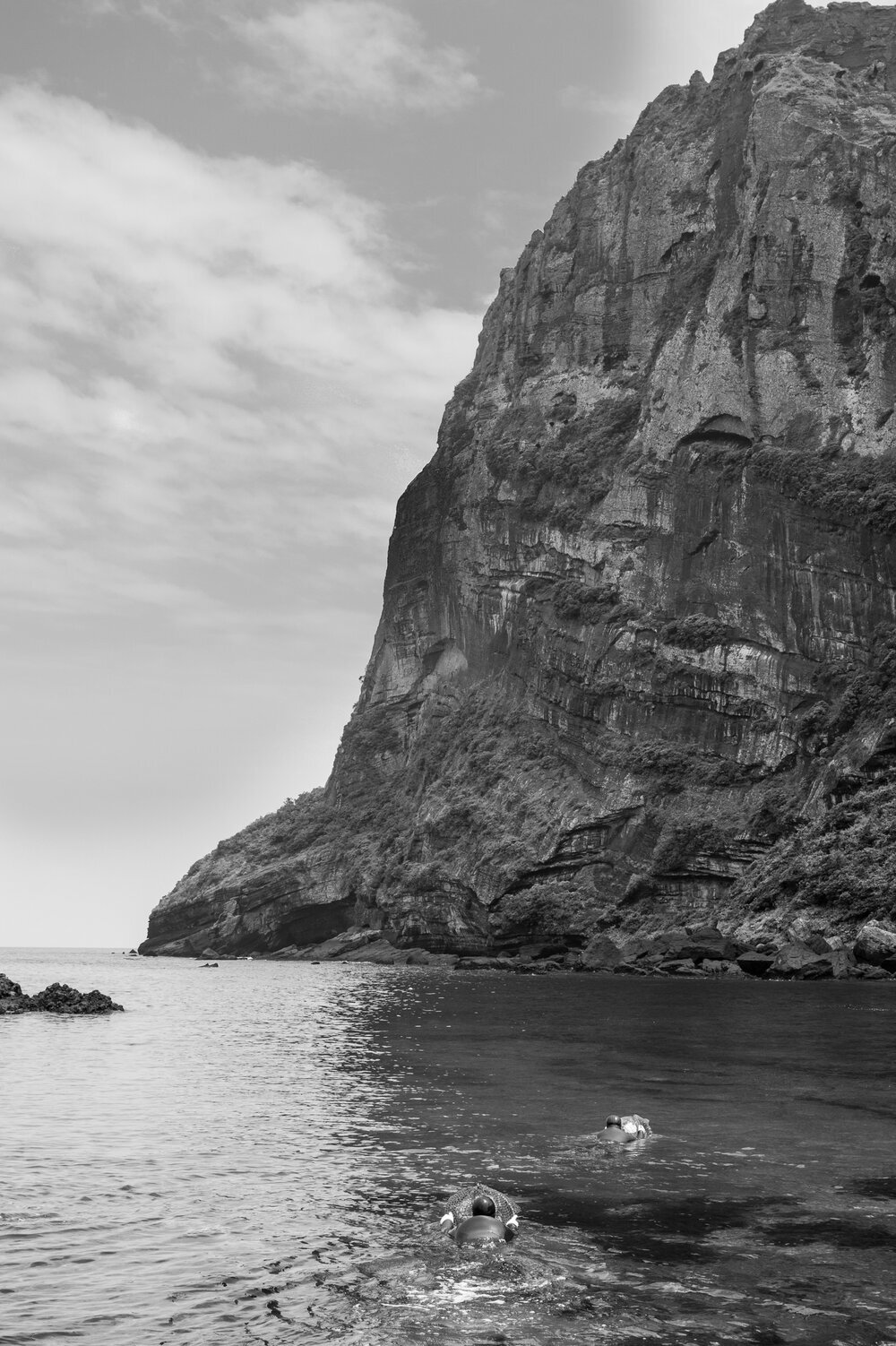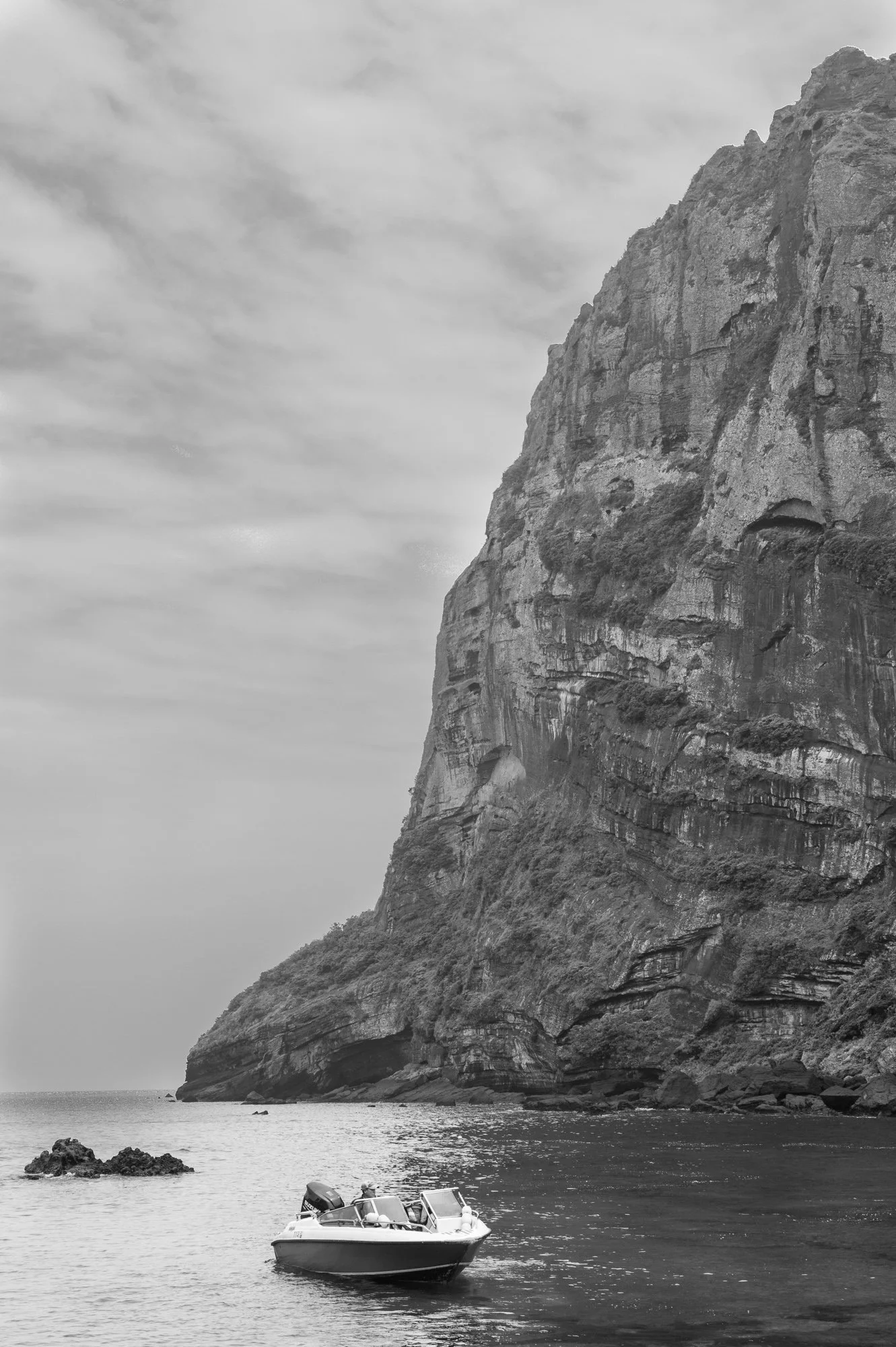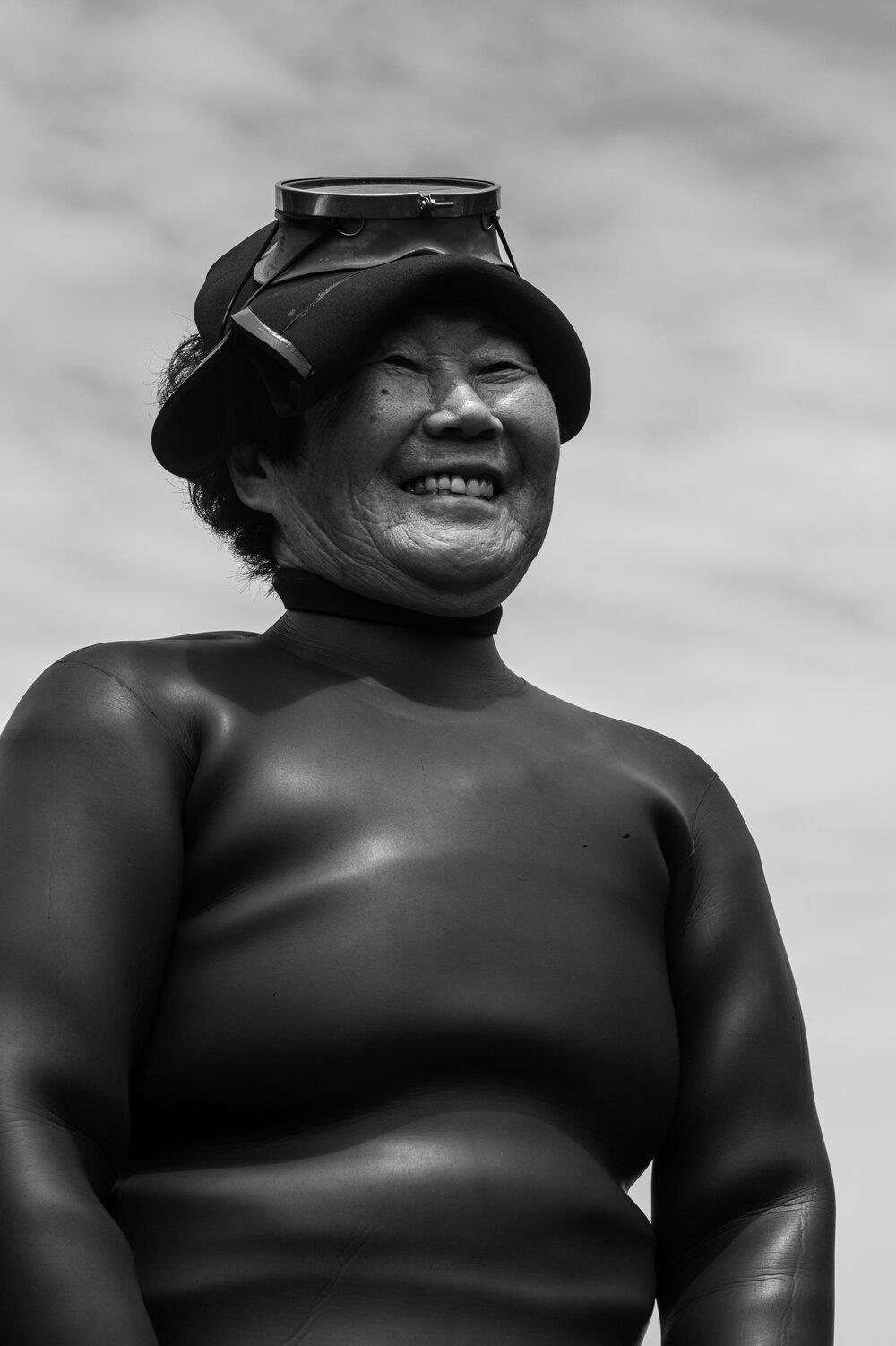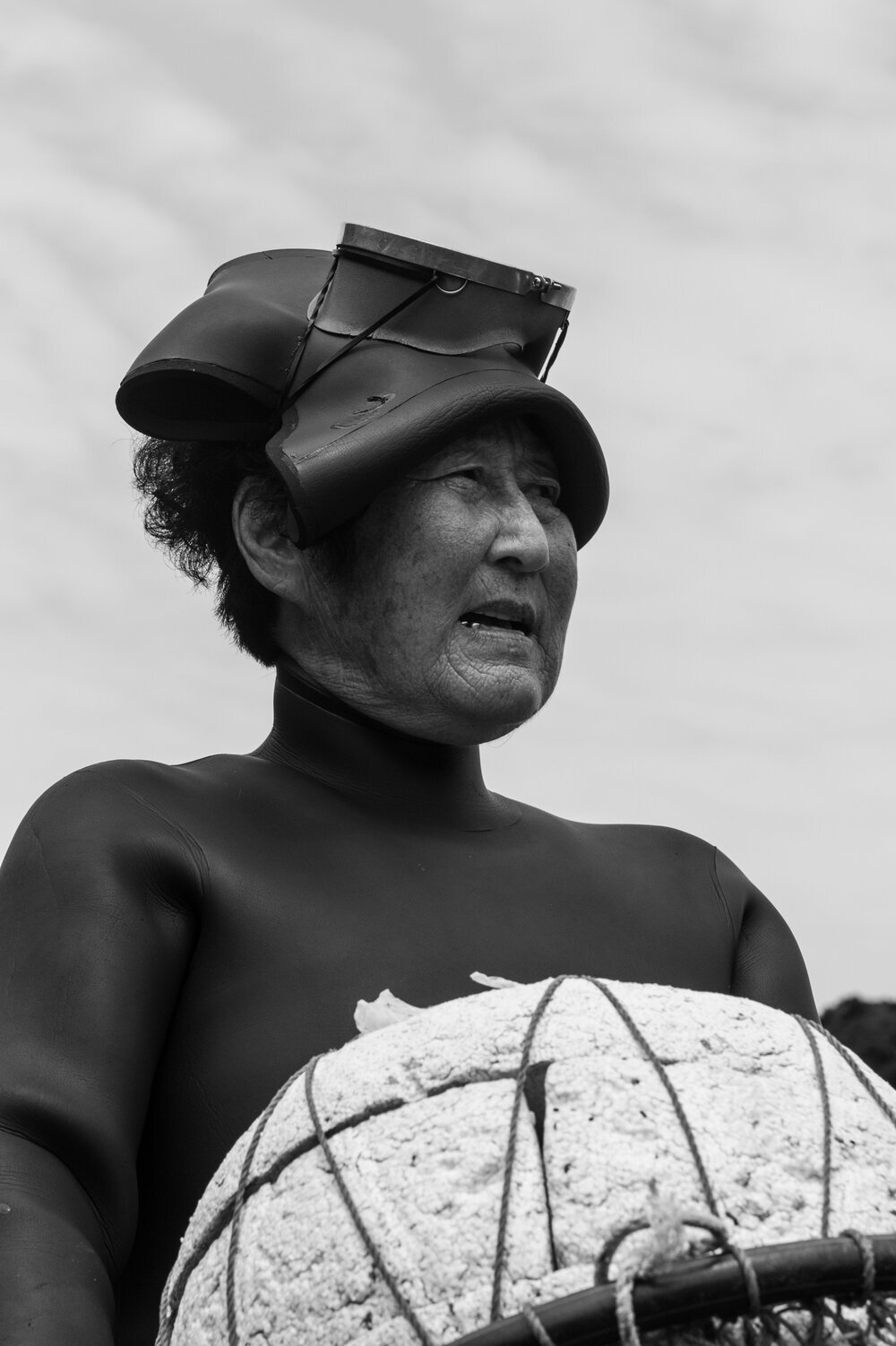The Female Free Divers of Jeju
South Korea’s free-diving Haeyneo are being hailed by Sylvia Earle as indigenous marine biologists, and lay the template for how we can inspire change in our own communities.
Standing on a jutted basalt cliff on an island south of South Korea, one could very faintly make out the likeness of a group of women in wetsuits.
It all seemed very chill, like surfers heading out into the morning break. A closer look would reveal that these women were neither surfers, yet even from this distance I could tell that something special was about to happen.
We were on Jeju, a subtropical volcanic island south of the Korean Peninsula, and my travel partner was here to photograph its subterranean lava tubes and Mount Hallasan. I was far less interested in geological phenomena and more in this subculture of women, many of them in their 80s, who free-dove to the ocean floor to harvest seafood by hand.
Haeyneo, or “sea women,” have for centuries been the primary divers in Korean culture. During the 1600s as men were increasingly drawn away to war and conquest, women were left behind to provide for their families and communities. Eventually, they became known as “Korea’s first working moms”. The reversal of traditional gender roles made Haenyeo an outlier in the country’s traditionally patriarchal society, and diving became exclusively female.
The work these women do, I had read, is perilous. Most of them over the age of 60, they submerge themselves into oftentimes freezing conditions for six hours a day, holding their breath for minutes at a time to pluck abalone, clam, seaweed, sea cucumber, sea urchin and squid from the bottom of the strait.
“We make money in the world-after-death while holding our breaths, and if we’re lucky, we come back to our world to spend it.”
They emerged from behind a bulteok, a traditionally walled-in rock area with a fire and food, carrying their fishing baskets, orange buoys and spears across the tide pools, paying no attention to the few bystanders as they chatted along with each other.
It was a stark contrast to most of the visitors who came to Jeju: honeymooners from the mainland who flocked to the island for its K-drama film locations, theme parks and coastal waterfalls. These women seemed timeless with their presence, connected to nature in a way that surpassed us all.
How to Support the Work of the Haeyneo
—Visit the Haenyeo Museum while on Jeju.
— Watch Lessons from Jeju, a beautiful film collaboration between Backroads Pictures & Patagonia.
—Check out the Google Arts & Culture virtual tour to gain more historical perspective.
Haeyneo were here for the ocean’s edible treasures that would bring in enough money to support their families and their community. They waded into the shallows together with their buoys and nets as they have done so many times before. Within a few minutes they had all made it past the cove, and each took turns submerging under the frigid water, gone for minutes at a time. Some popped up with urchin, abalone, a coveted sea cucumber, only to return with a basket full of bounty.
Haeyneo have become a dwindling legacy. In 2016, 85% of divers were by working standards far into retirement. In the 1960s at their peak, there were 23,000 Haenyeo women on Jeju, but now, only four thousand or so remain. It is a sign of the times we have seen with cultural heritage around the world— most Korean women today would rather work in metropolitan careers than plunge into the cold sea as their grandmothers and mothers have done.
A Haeyneo Cultural Renaissance
Yet Haeyneo are experiencing a significant renaissance today, most possibly because their traditional way of life is both an inspiration and education for us all. In 2016 UNESCO designated them a Cultural Heritage of Humanity for their sustainable marine harvesting practices and the collectives-- empowering women, opening schools and environmental education about their work-- that they form in their communities.
“Dr. Sylvia Earle, still diving at age 78, shares a kinship with Jeju Haeyneo. She suggested reframing them as ‘indigenous marine biologists’ who could catalog their findings of the marine environment.”
They are yet another example of the traditional knowledge we know is essential to preserving our oceans, preserving what we eat, and preserving our stories as we move forward into a world rife with overfishing and exploitation of our marine resources.
Haeyneo write a template for how we can perceive our own vision of life in the 21st century by being more present and effective in our own communities. We are all on the search for more a simplistic and holistic approach to improving the lives of our children and our planet, and it is Changemakers like this who we must tap more into and source wisdom from.
Yes, something special had indeed happened, as it happened every day here. I watched them out at sea, forming almost a seamless Fibonacci pattern of orange buoys. Sometimes with an octopus coiled around their arm, sometimes empty-handed, always, always, surrounded by each other.

